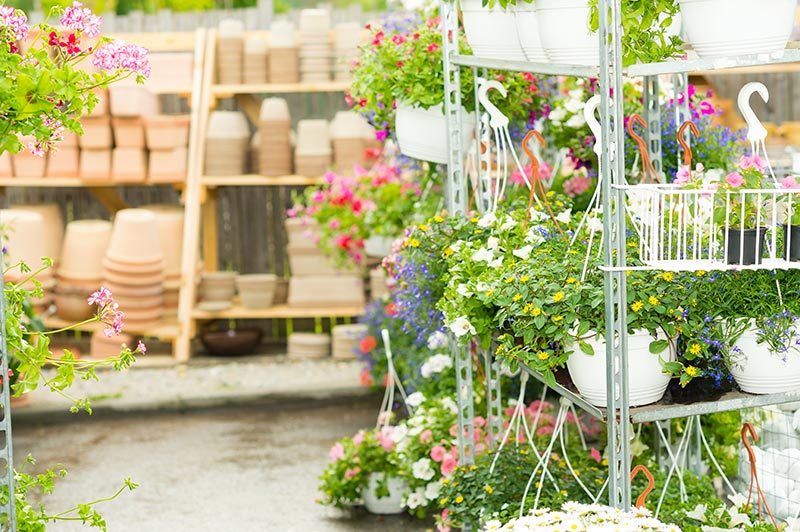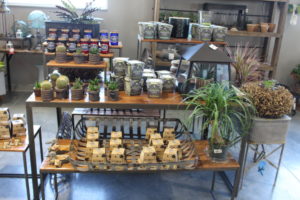
Back to Basics
Foot traffic may be strong, inventory may be right and customer reviews online shout out your store is stellar.
Despite these strong attributes, however, sales don’t always add up to what you want them to be. So what’s a retailer to do?
To help lead your garden center to retail success, consider how bringing yourself back to the basics can help.
Marketing, merchandising and management are key areas to review, each offering insight and opportunities to why your store may or may not be thriving.
Ready to kick your store into gear? Let’s take it old school with some modern twists, beginning with your merchandising.
Basics of Merchandising
It used to be that dynamic displays and eye- catching windows or entrances would lure customers to stores and help push sales all day long.
Less disposable income among buyers and more competition among retailers have made these merchandising tricks out-of-date and, as a result, out-of-touch with what retailers need to do to get customers to spend in their stores.
To change this pattern, consider how your merchandising can once again lure customers to spend, enhance their shopping experience and make your job as a retailer much easier.
To begin, identify and then get rid of any store clutter that makes your displays too complicated, less approachable and difficult for employees to update easily. In other words, simplify your merchandising efforts.
Next up, you should aim to create a store environment that allows for frequent inventory changes and good-looking displays without a lot of fuss on your end.
Some key things to consider include:
- Use practical fixtures to showcase your products. You can be creative and introduce non-traditional fixtures such as galvanized metal buckets or crates creatd into shelving, but avoid anything that becomes unapproachable and intimidating for customers to engage with. You also want to ensure your fixtures adequately hold inventory. That’s the goal after all, isn’t it?
- Double expose items to increase the chance of their exposure and their purpose. In any retail environment, you have to assume not every item will be viewed by every customer in every store visit. Introduce multiple merchandising efforts among key items that will help increase their likelihood of being seen and experienced by customers. As a result? A stronger chance of sales.
- Change your displays regularly to keep things interesting and fresh. While this can be time intense, it doesn’t have to be if you have efficient displays and fixtures in place. Changing inventory often makes your overall store experience fresher and more exciting for frequent customers — even first-time customers benefit from seeing your best inventory front and center.
- Provide adequate lighting in your store and on your displays. There’s nothing worse than hard-to-view displays and poorly lit stores. Customers need to see to buy — plain and simple. Make it easy for them.
- Use colorful signage that doesn’t get lost among your inventory. You can’t speak all the details you should be sharing about your store and inventory to customers, so let signage help you. From sharing product details to offering store return details to offering interesting store facts and more, signage is a useful tool to help you communicate with customers more effectively.
- Finally, make merchandising a priority everyday versus once a week or every other week. A few changes a day can lead to stronger overall merchandising habits and ultimately, sales as well.
Marketing Old School
Merchandising will always be among the most powerful ways you can support your store, but merchandising alone won’t get customers into your store. Marketing is a constant must that needs to be added to your business consistently, yet it doesn’t have to be as complicated as it often seems.
Your main goal when it comes to marketing is memorable despite the chaos and clutter of competition.
The question, of course, remains: how do you do this? To start, do not ignore these key areas in which you have to be engaged regularly:
Social Media
Like it or not, customers are active on social media which means you need to be too.
Rather than just sell, sell, sell via these outlets, offer interesting facts, insight or ideas that pertain to your retail space. Share recipes for veggies if that makes sense, offer trivia on Thursdays and introduce new products every Monday, so your customers get used to discovering what’s new in your store as the week begins.
The ideas don’t have to be difficult; they just have to be consistent.
And never overlook your branding efforts in your online marketing — use your logo and keep your store vibe strong and clear in any channel you are communicating.
Email Marketing
Did you know that email marketing is the No. 1 driver of e-commerce sales? Email marketing is a key player in bringing sales to physical stores, as well.
Keeping this in mind, identify no less than once every other week — and as often as once a week — where you share relevant store promotions, news and product details via email marketing.
This consistent messaging to your email marketing list will help keep your store top of mind among customers and, ultimately, help bring more sales to your store.
In-store Events
Special events have been going on since stores first came to life. Small or large, special events that take place in your store should be promoted via email marketing, social media and, of course, in-store to all customers leading up to your event.
Make your events worth attending by introducing music, food and other local businesses when possible.
As the saying goes: the more, the merrier. So be sure and add more to your special events to make them merrier!
Community Initiatives
Does your community have seasonal events that may welcome stores to get involved? Or how about your local youth sport teams? Do they need sponsors or supporters? Don’t overlook chambers and community groups.
These are all great ways to get your store front and center among your local buying audience.
The catch? Be active and willing to support others the same way you hope they will support you.
In the case of community marketing, the obvious isn’t always what is clear to see — it’s what is beyond the expected that pushes your chance of sales.
Finally, remember that running and operating a retail store has been something millions of folks have been doing for thousands of years.
It’s not always easy, but it doesn’t have to be hard either.
Take it back to the basics to help your store stand out among the competition and, ultimately, gain more sales along the way.


















 Videos
Videos





